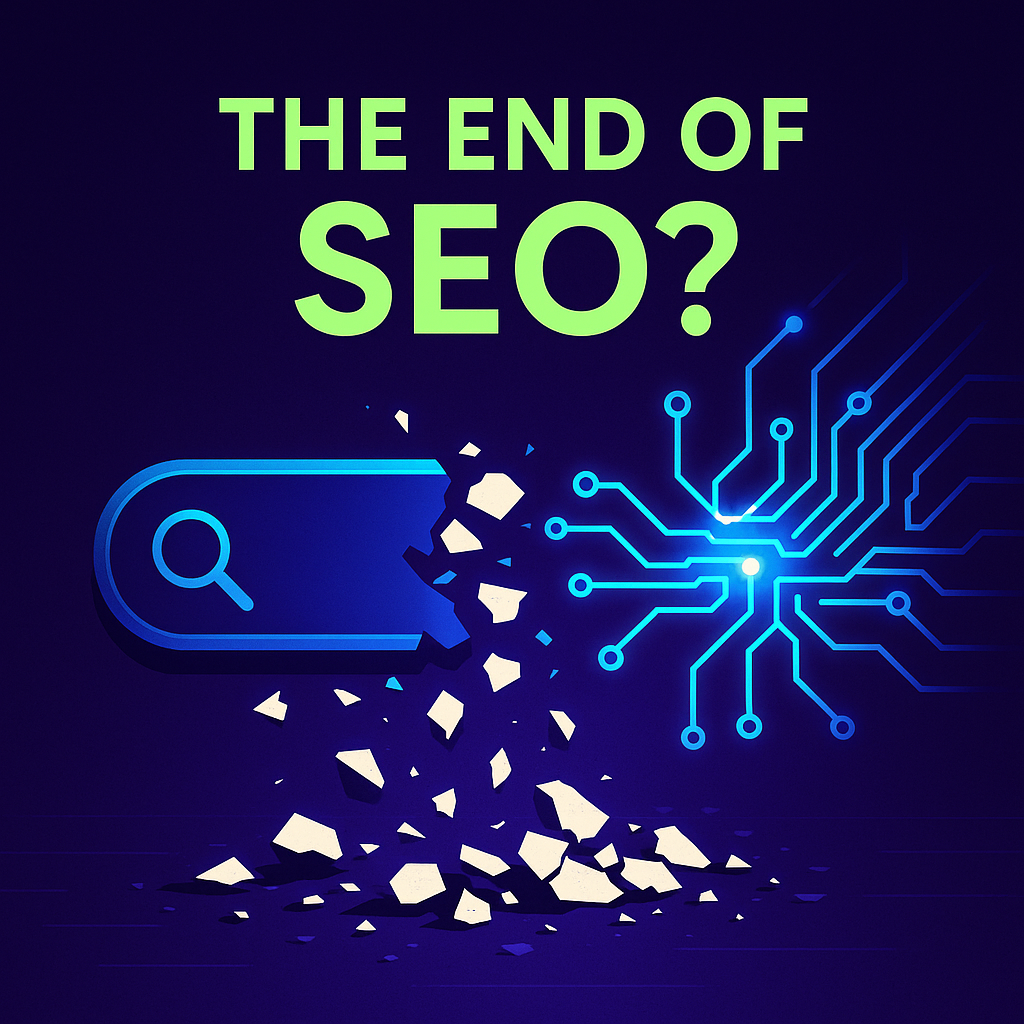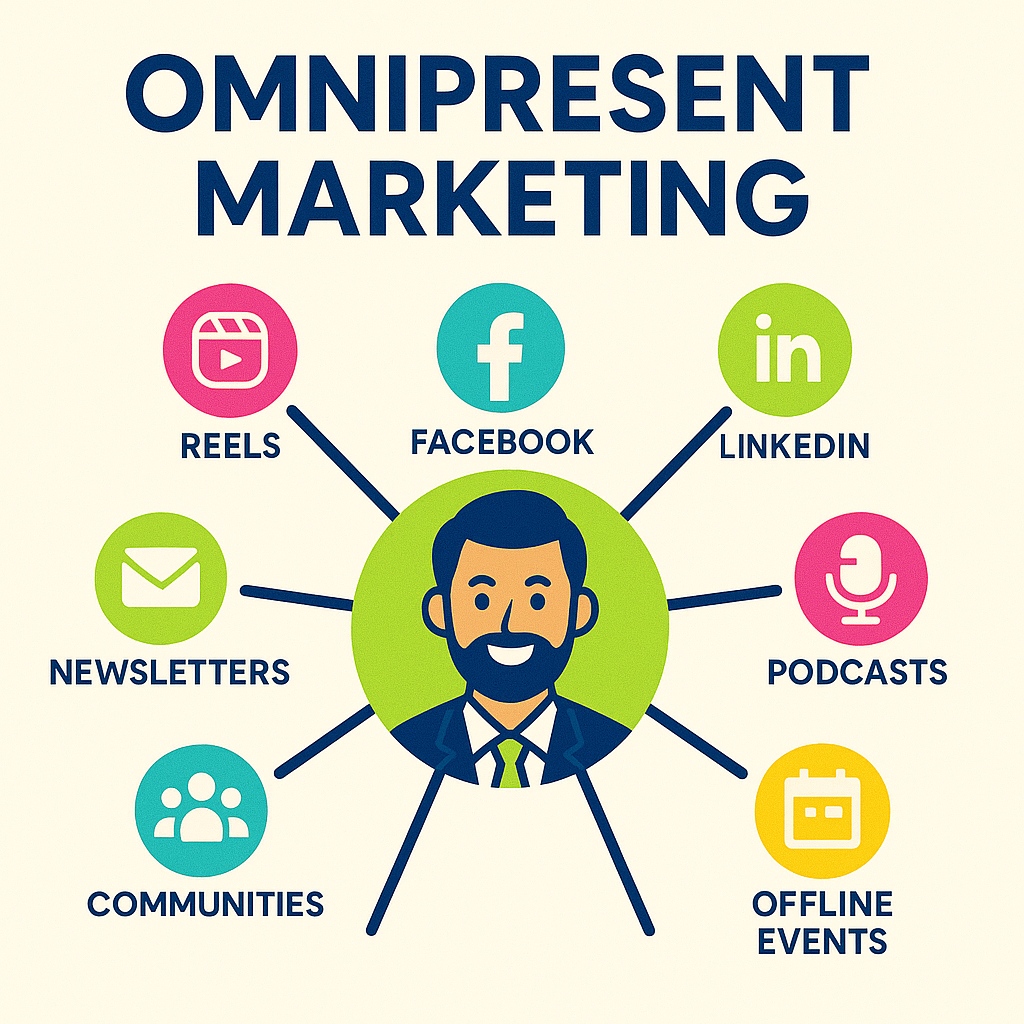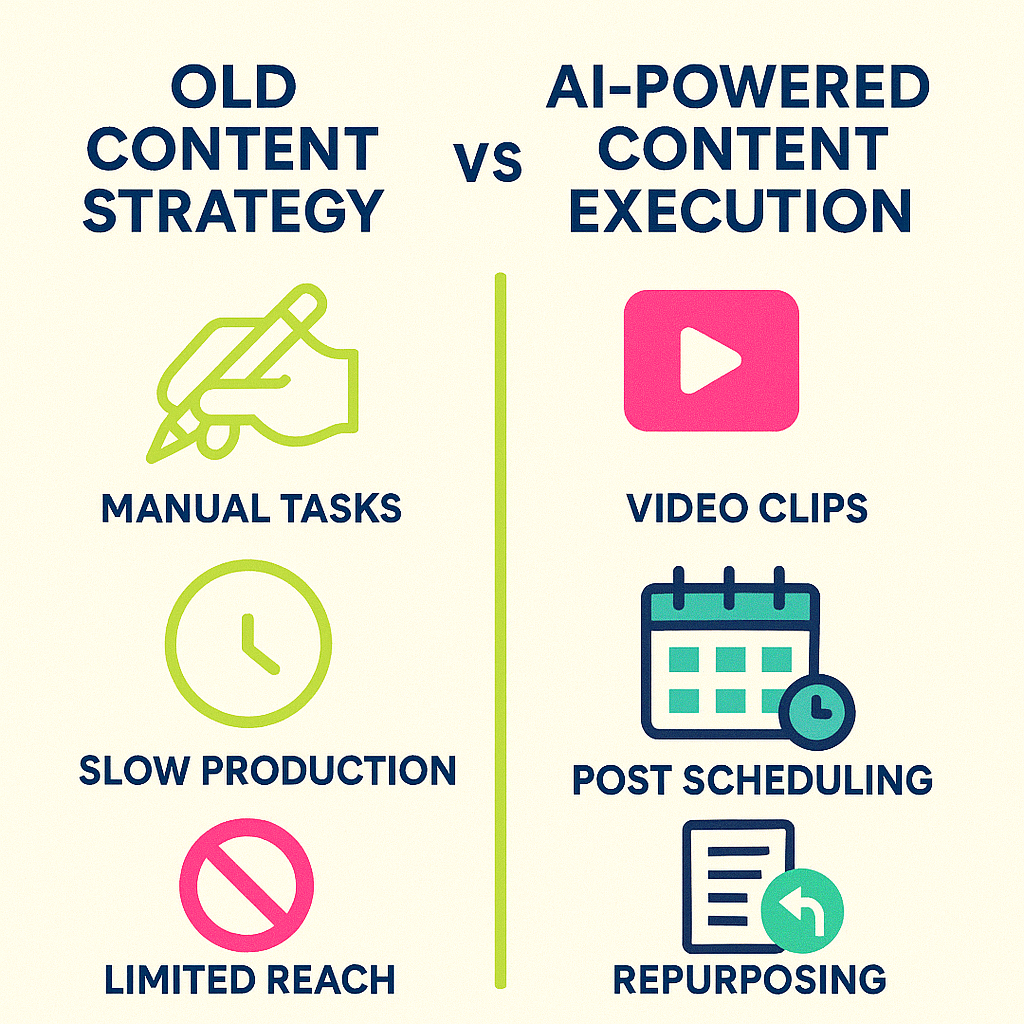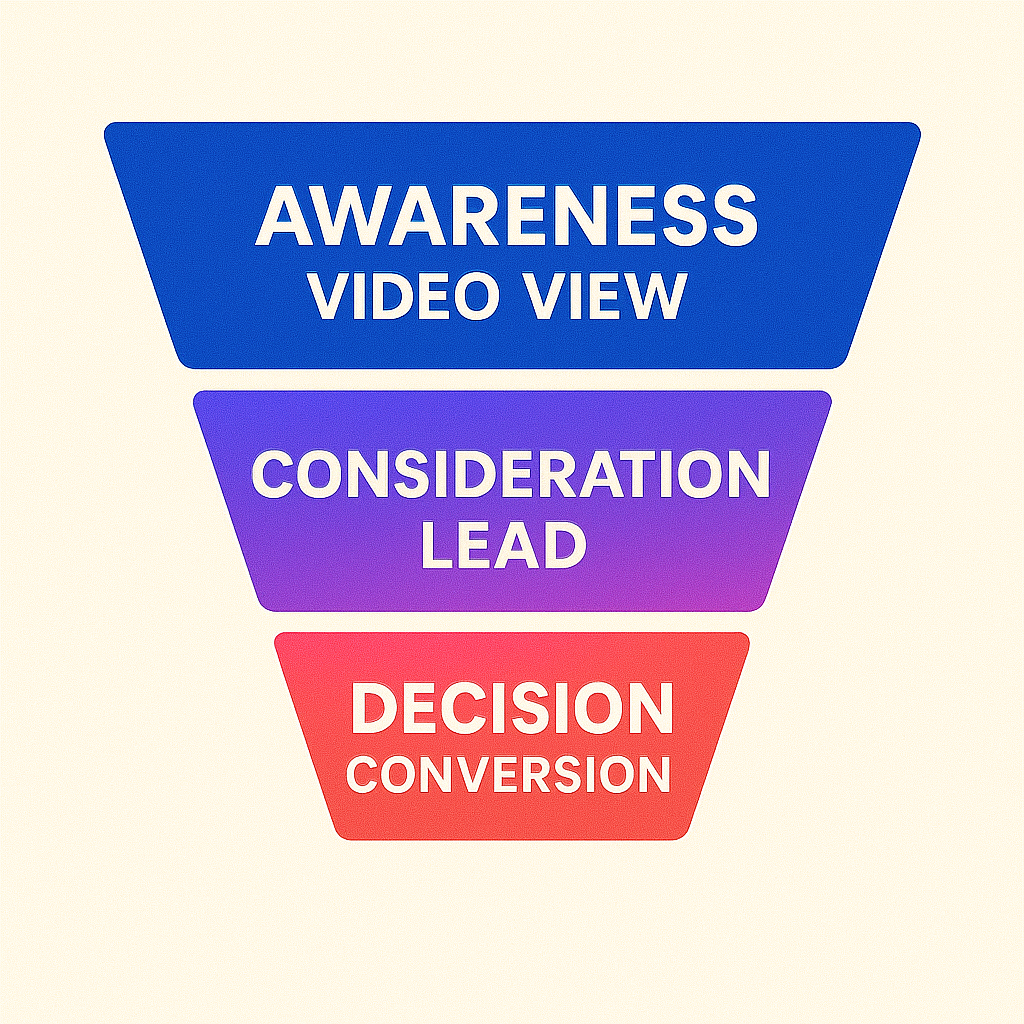Don’t worry there is good news too: the end of search traffic might be the best thing that’s happened to your business.
BONUS: You may never have to hear Neil Patel talk about backlinks or ‘looker studio’ again! (Love you, Neil… but sometimes it got a little overwhelming.)
Last week, Yamini Rangan, CEO of HubSpot, posted something on LinkedIn that marketers can’t afford to ignore.
“Website traffic was a valuable metric correlated to growth. Now it may be a vanity metric.”
And she didn’t stop there. She backed it up with hard data:
- AI Overviews now appear in 43% of Google searches—and when they do, organic click-through rates drop by nearly 35%.
- ChatGPT search usage in Europe grew 3.7x in just six months.
- Google’s new AI Mode and audio summaries are expected to decrease clicks even more.
If you’re a business owner who has poured time and energy into content that ranks on Google—or you’ve relied on SEO to attract new leads—this shift is massive.

But what makes this warning especially compelling is who it’s coming from. As CEO of HubSpot, a company built on inbound marketing, Yamini Rangan has access to more real-time marketing behavior data than just about anyone. She’s not guessing. She sees what’s happening inside thousands of businesses.
So when she says, “the era of traffic-based marketing is ending,” we listen.
And when she follows it up with how to pivot, we really pay attention.
Here are her three big recommendations for adapting to the new marketing landscape—plus practical, revenue-focused ways to make each one work inside your business.
1. Be Everywhere and Diversify Your Channels

Yamini isn’t just saying “branch out from Google.” She’s calling out something more fundamental:
We can’t rely on Google anymore to deliver us to the people actively searching for our services.
Why?
Because AI-powered search tools—like Google’s AI Overviews and ChatGPT’s built-in browsing—are answering people’s questions before they ever click. And when people don’t click, they don’t land on your site. Even when you are the best solution.
Another way to think about it: If Google and ChatGPT are giving people their answers directly, you need to reach your audience before they go looking. You need to show up where they’re already spending time—not just where they might eventually search.
That means showing up in:
- Instagram Reels
- Facebook feeds
- LinkedIn posts
- Podcasts they follow
- Newsletters they trust
- Online communities they love
- ✨ Offline too! Think: being interviewed on local TV or a podcast, hosting a live workshop or webinar, sponsoring a community event, guest speaking at conferences or networking groups, and even a good old-fashioned handwritten note
The key is omnipresence—being visible in multiple places at once so people feel like you’re “everywhere” they look. And yes—this sounds overwhelming. But it doesn’t have to be.
The Cool Part? AI Helps with Both Content Creation and Execution

In the past, creating enough content for multiple platforms—and executing consistently—would have required a full-time team (and a lot of stress). Today? AI makes this possible even for small business owners working solo or with lean support.
Let’s break it into two powerful areas where AI can help:
🤖 AI-Powered Content Creation Tools
These tools help you create engaging, on-brand content without starting from a blank page. Whether you’re recording a podcast, sharing a lesson, or hosting a training, AI helps you spin it into multiple formats that work everywhere.
🎬 1. Opus Clip
Turn long-form videos (like a webinar or podcast interview) into dozens of short, punchy video clips for Instagram Reels, YouTube Shorts, and TikTok. It uses AI to identify “golden moments,” adds captions, and edits automatically.
🎤 2. Castmagic
Drop in a podcast or voice memo, and it generates quotes, tweet threads, blog outlines, LinkedIn posts, and more. It’s like having a content assistant that listens, learns, and writes for you.
📹 3. Descript
Record, edit, and repurpose videos with a drag-and-drop editor. You can cut filler words, change your script after recording, and turn a single video into multiple pieces of media.
These tools help you create one long piece of content and quickly slice it into multiple formats—without rewriting or re-recording everything. Which brings us to…
⚙️ AI-Powered Strategy Execution Tools
Once you’ve created your content, AI tools can now schedule, optimize, and distribute it for you across multiple channels—on autopilot. This is the execution side of omnipresence.
Here’s what today’s smartest tools can do:
🧠 Intelligent Scheduling
AI analyzes your past post performance, audience activity, and industry trends to suggest the best posting times for each platform.
🌍 Cross-Platform Optimization
Auto-adjust content to meet the ideal specs of Instagram, LinkedIn, TikTok, etc.—from caption formatting to image sizing.
📤 Automated Distribution
Push your content live across every platform at once, with customized posts per channel.
📈 Performance Prediction & Feedback
Some tools can predict how a post will perform before it goes live—and offer tips to improve it.
♻️ Evergreen Content Recycling
AI identifies high-performing content from your library and schedules it to resurface at the perfect time.
🔁 Workflow Integration
Some tools even integrate with platforms like Zapier so that publishing a blog post can auto-generate and schedule your social media, hands-free.
Two AI-Powered Tools That Help You Execute (Based on Your Stage):
💸 Budget-Friendly: SocialBee
Great for solo business owners. It offers:
- Easy scheduling to all major platforms
- Post recycling and smart categories
- Platform-specific customization
- Content calendar and queue views
- AI-generated post captions and hashtags
💪 More Robust Option: Hootsuite
Great for growing teams or businesses with more content volume. It offers:
- All-in-one dashboard for TikTok, YouTube, LinkedIn, Instagram, and more
- Bulk scheduling
- Smart analytics and campaign planning
- OwlyGPT: a built-in AI that helps analyze, write, and optimize your posts
Other great options: Buffer, FeedHive, Ocoya, and Predis.ai are also powerful depending on your budget and needs.
✨ Pro Tip: Always review your analytics. Even with AI, your human insights matter. Understanding what works helps your tools get smarter—boosting both performance and reach over time.
And If You Want to Supercharge All of This…
Pair your organic content with a $5/day Meta Awareness Ad Campaign. It’s like lighter fluid for the fire you’re building—putting your best content in front of the right people, even if the algorithm doesn’t show it organically.
🧠 I wrote a full guide here:
👉 How to Set Up a Facebook Awareness Campaign That Keeps You Top of Mind
Use this campaign to:
- Retarget your warm audience (past visitors, video viewers, leads)
- Build familiarity through repeat impressions
- Let Meta’s AI find the best placement and audience
- Bridge the gap between paid and organic growth
This is what it means to build an omnipresent brand without a giant team.
You bring the message.
AI brings the distribution.
The Awareness Campaign brings the momentum.
2. Be Specific With Context
In the old days of SEO, broad educational content was the way to rank. You’d write something like “What is a sales funnel?” and hope it brought in traffic.
Now? Your audience wants more than just information. They want relevance. They want to feel like the content they’re seeing was made just for them, right where they are, in their specific situation.
Yamini nails it: success today means going deep, not wide.
The good news? You don’t need to create a hundred different pieces of content from scratch. With a smart strategy—and a few AI tools—you can tailor your messaging to each stage of the customer journey while working smarter, not harder.
🎯 Step 1: Match Your Messaging to the Customer Journey

Let’s break it down using three Meta campaign objectives, aligned with where your customer is mentally and emotionally:
| Stage | Objective | Example Message |
| Awareness | Video Views / Engagement | “Most [photographers/coaches] don’t realize this mistake is holding back their growth…” |
| Consideration | Traffic / Leads | “Download the 3-step framework that helped 500+ business owners double their leads.” |
| Decision | Conversions | “Ready to finally scale with confidence? Here’s how we’ll do it together.” |
This is where Meta shines: you can run separate campaigns for each stage, with different messages, all optimized automatically for the right actions (views, clicks, or purchases).
🧠 Step 2: Use AI to Craft the Right Message—Faster
🎬 Opus Clip
Slice a webinar or training into short videos. Use some for cold awareness, and others for nurturing.
🎤 Castmagic
Turn long-form content into email copy, social posts, and bullet-point summaries for each funnel stage.
📹 Descript
Record and edit videos that can be customized for different calls-to-action based on where someone is in their journey.
⚙️ Step 3: Use AI to Execute It All—Smartly
📅 Smart Scheduling & Optimization
Use FeedHive, SocialPilot, or Buffer to optimize post timing, formatting, and layout for each platform.
🌐 Cross-Platform Distribution
Batch-schedule your funnel-stage content to Instagram, Facebook, LinkedIn, YouTube, and TikTok.
🔁 Evergreen Funnel Re-Activation
Recycle and repost your best middle-of-funnel content with SocialBee or Hootsuite.
🔂 Automated Funnel Nudges
Use Zapier to trigger custom messages or campaigns based on how users engage with your content.
When your funnel is fueled by AI—from creation to execution—it becomes a well-oiled revenue machine.
3. Optimize for Conversion, Not Clicks
This might be the most refreshing shift Yamini offers—and honestly, it’s long overdue:
“Don’t ask, ‘How do we get more blog visits?’ Ask, ‘How do we convert more prospects into customers across all channels?’”
Clicks are easy to measure. But conversions? That’s what grows your business.
🎯 Real-World “Before and After” Shift:
🚫 Before:
- Your ad leads to a blog post or homepage
- “Contact Us” is your only CTA
- No follow-up after a lead opts in
✅ After:
- Your ad leads to a targeted lead magnet or booking page
- You include a short video pitch and clear CTA
- You nurture leads with automated follow-up, retargeting, and testimonials
🧠 Conversion-Focused Tools That Work Smarter (Not Just Harder):
- Unbounce Smart Traffic – AI-based landing page optimization
- Mutiny – Personalized website experiences to boost conversions
- ConvertKit / ActiveCampaign – Behavior-based email flows that nurture and sell
- Loom / Bonjoro – Personalized video follow-ups for warm leads
- Deadline Funnel – Time-sensitive CTAs and urgency automation
🧪 Test, Optimize, Repeat
You don’t need a full funnel rebuild to improve conversions. Sometimes, all it takes is:
- A clearer CTA
- A better testimonial
- A stronger headline
- A shorter, more targeted landing page
- Or a 90-second video pitch instead of a wall of text
The key is to test and iterate—then let AI help you scale what works.
🔧 Tool Summary: Your AI-Powered Marketing Stack for the New Era
(See previous message for the full summary list—this section stays the same)
Ready to Build a Smarter, Leaner Marketing Machine?
If you’re ready to stop chasing clicks and start building a data-backed system that actually brings in leads and drives serious growth—let’s talk. At Meredith Kallaher Marketing, we use smart Meta ad strategies and conversion-first funnels (powered by the latest AI tools) to help you show up everywhere your dream customers are—and turn visibility into revenue.
🎯 Smart ads. Serious results.
💬 Ridiculously fun partnership.
Let’s map out your next best move—
👉 Book Your Free Strategy Call Here
I’m Meredith
We create BIG value for business owners by connecting them with their ideal customers and clients using creative, strategic and authentic digital advertisements.